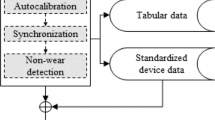Abstract
Health technology wearables can quantify and visualize an individual’s physical activity and any other associated data (e.g., vitals, calories, steps, distance, etc.) across time. Currently, this data is communicated to the wearable’s organization data repositories and is accessible to the individual via a mobile application. However, the data cannot be integrated with the individual’s EHR due to structural and semantic interoperability issues and experts relying on EHRs don’t have a complete view of the individual’s health, activity data along with other health records, to provide better healthcare outcomes. This issue is due to the inability of the existing healthcare standards to capture and share the activity and its associated data with any healthcare information systems, such as an EHR. The goal of this research is to addresses this issue by leveraging the HL7 FHIR standard to design an interoperable entity that will allow us to integrate activity and its associated data with an EHR. The research design is implemented using the HL7 FHIR Java-based implementation, REST web service, OpenEMR, and tested using widely used wearables.









Similar content being viewed by others
References
ASTM C. Standard Specification for Continuity of Care Record. 2015. http://www.astm.org/Standards/E2369.htm. Accessed Nov 2016.
Ferranti JM, Musser RC, Kawamoto K, Hammond WE. The Clinical Document Architecture and the Continuity of Care Record: A Critical Analysis. J. Am. Med. Inform. Assoc. 2006;13(3):245–52. https://doi.org/10.1197/jamia.M1963.
D’Amore JD, Sittig DF, Wright A, Iyengar MS, Ness RB. The Promise of the CCD: Challenges and Opportunity for Quality Improvement and Population Health. AMIA Ann Symp Proc. 2011;2011:285–94.
Boone KW. The CDA™ book. 2011 ed. Springer; 2011.
ISO. ISO 13606;Health informatics -- Electronic health record communication. 2010. https://www.iso.org/standard/50122.html. Accessed May 2, 2018.
Saripalle R. Fast Health Interoperability Resources (FHIR): Current Status in the Healthcare. International Journal of E-Health and Medical Communications (IJEHMC). 2019;10(1):76–93. https://doi.org/10.4018/IJEHMC.2019010105.
Becker S, Miron-Shatz T, Schumacher N, Krocza J, Diamantidis C, Albrecht U. mHealth 2.0: Experiences, Possibilities, and Perspectives. JMIR Mhealth and Uhealth. 2014;2(2):e24. https://doi.org/10.2471/mhealth.3328.
van Heerden A, Tomlinson M, Swartz L. Point of care in your pocket: a research agenda for the field of m-health. Bull World Health Organ. 2012;90(5):393–4. https://doi.org/10.2471/BLT.11.099788.
Gay V, Leijdekkers P. Bringing Health and Fitness Data Together for Connected Health Care: Mobile Apps as Enablers of Interoperability. J Med Internet Res. 2015;17(11):e260. https://doi.org/10.2196/jmir.5094.
Mathew PS, Pillai AS. Big Data solutions in Healthcare: Problems and perspectives. 2015 International Conference on Innovations in Information, Embedded and Communication Systems (ICIIECS). 2015:1–6. https://doi.org/10.1109/ICIIECS.2015.7193211.
Mandl KD, Mandel JC, Kohane IS. Driving Innovation in Health Systems through an Apps-Based Information Economy. Cell syst. 2015;1(1):8–13. https://doi.org/10.1016/j.cels.2015.05.001.
Reiner M, Niermann C, Jekauc D, Woll A. Long-term health benefits of physical activity – a systematic review of longitudinal studies. BMC Public Health. 2013;13(1):813. https://doi.org/10.1186/1471-2458-13-813.
Heath GW, Parra DC, Sarmiento OL, Andersen LB, Owen N, Goenka S, et al. Evidence-based intervention in physical activity: lessons from around the world. Lancet. 2012;380(9838):272–81. https://doi.org/10.1016/S0140-6736(12)60816-2.
Shameer K, Badgeley MA, Miotto R, Glicksberg BS, Morgan JW, Dudley JT. Translational bioinformatics in the era of real-time biomedical, health care and wellness data streams. Brief. Bioinform. 2015;18(1):105–24. https://doi.org/10.1093/bib/bbv118.
Lobelo F, Stoutenberg M, Hutber A. The Exercise is Medicine Global Health Initiative: a 2014 update. Br. J. Sports Med. 2014;48(22):1627–33. https://doi.org/10.1136/bjsports-2013-093080.
Lobelo F, Kelli HM, Tejedor SC, Pratt M, McConnell MV, Martin SS, et al. The Wild Wild West: A Framework to Integrate mHealth Software Applications and Wearables to Support Physical Activity Assessment, Counseling and Interventions for Cardiovascular Disease Risk Reduction. Prog. Cardiovasc. Dis. 2016;58(6):584–94. https://doi.org/10.1016/j.pcad.2016.02.007.
Sallis R. Developing healthcare systems to support exercise: exercise as the fifth vital sign. Br. J. Sports Med. 2011;45(6):473. https://doi.org/10.1136/bjsm.2010.083469.
Coleman KJ, Ngor E, Reynolds K, Quinn VP, Koebnick C, Young DR, et al. Initial validation of an exercise "vital sign" in electronic medical records. Med. Sci. Sports Exerc. 2012;44(11):2071–6. https://doi.org/10.1249/MSS.0b013e3182630ec1.
Saripalle R. Extending HL7 RIM Model to Capture Physical Activity Data. 29th International Conference on Software Engineering & Knowledge Engineering (SEKE). 2017:254–9. https://doi.org/10.18293/SEKE2017-053.
Fisch MJ, Chung AE, Accordino MK. Using Technology to Improve Cancer Care: Social Media, Wearables, and Electronic Health Records. Am Soc Clin Oncol Educ Book. 2016;(36):200–8. https://doi.org/10.1200/EDBK_156682.
Fitbit. Fitbit Web API Reference. https://dev.fitbit.com/build/reference/web-api/. Accessed April 12, 2018.
Google Fit. The Google Fit SDK. https://developers.google.com/fit/. Accessed May 2, 2018.
Apple Inc. Apple HealthKit API. https://developer.apple.com/healthkit/. Accessed May 2, 2018.
Schema.org. Schema.org. 2012. http://schema.org/. Accessed April 14, 2018.
Estrin D, Sim I. Open mHealth Architecture: An Engine for Health Care Innovation. Science. 2010;330(6005):759.
openEHR. The openEHR Archetype Model: Archetype Definition Language ADL 2. 2015. openEHR:143.
Open mHealth. Open mHealth Schema library. 2015. http://www.openmhealth.org/documentation/#/schema-docs/schema-library. Accessed April 12, 2018.
Lamprinos I, Papadaki C, Schmuhl H, Demski H. mobile Personal Health Application for Empowering Diabetic Patients: The Case within EMPOWER Project; 2013.
Corepoint Health. The HL7 Evolution: Comparing HL7 Version 2 to Version 3, Including a History of Version 2. 2009. https://corepointhealth.com/wp-content/uploads/hl7-history-v2-v3.pdf. Accessed August 12, 2017.
HL7. FHIR Extension Registry. http://hl7.org/implement/standards/fhir/extensibility-registry.html. 2017. Accessed March 25, 2018.
Velykis A. HAPI FHIR. 2019. http://hapifhir.io/. Accessed Nov 2016
HL7. FHIR Guide to Designing Resources. 2018. http://wiki.hl7.org/index.php?title=FHIR_Guide_to_Designing_Resources#Naming_Rules_.26_Guidelines. Accessed March 25, 2018.
Corepoint Health. The future of interoperability: Web APIs & HL7 FHIR. 2018. https://corepointhealth.com/wp-content/uploads/Future-of-Interoperability-white-paper.pdf. Accessed February 2, 2019.
Leftwich R, Jaffe C. HL7 FHIR and the Future of Interoperability. 2018. https://www.intersystems.com/resources/detail/hl7-fhir-future-interoperability/. Accessed February 2, 2019.
Acknowledgements
We would like to show gratitude to Dr. Colleen Munoz and Dr. Mark Stoutenberg for sharing their pearls of wisdom and feedback during this research conception, design, and development. We also thank other reviewers and experts at Illinois State University for their insights.
Author information
Authors and Affiliations
Corresponding author
Ethics declarations
Conflict of interests
The author declares that there is no conflict of interest.
Additional information
Publisher’s note
Springer Nature remains neutral with regard to jurisdictional claims in published maps and institutional affiliations.
This article is part of the topical collection on Internet Of Medical Things In E-Health
Rights and permissions
About this article
Cite this article
Saripalle, R.K. Leveraging FHIR to Integrate Activity Data with Electronic Health Record. Health Technol. 10, 341–352 (2020). https://doi.org/10.1007/s12553-019-00316-5
Received:
Accepted:
Published:
Issue Date:
DOI: https://doi.org/10.1007/s12553-019-00316-5




